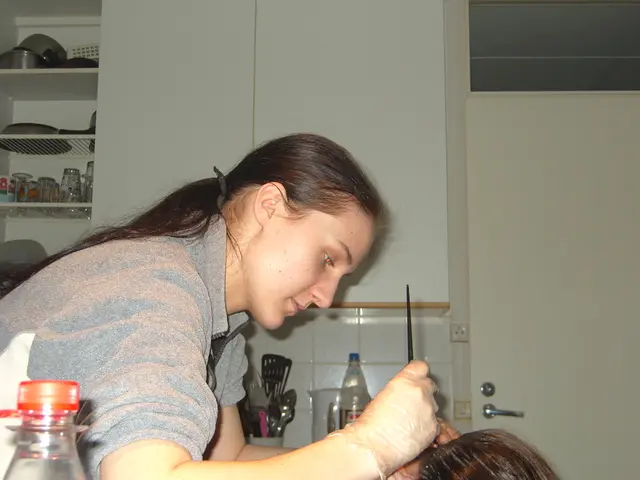MRSA Carrying: Duration and Management
MRSA Carrying vs MRSA Infection
MRSA infestation: Spread, prevention strategies, and further insights
Carrying Methicillin-resistant Staphylococcus aureus (MRSA) bacteria, also known as colonization, means MRSA resides on or in the body without causing an infection. Unlike MRSA infection, colonization doesn't produce symptoms. MRSA bacteria typically dwells in moist areas, like the nose, throat, groin, armpits, skin folds, and perineal area.
Though it may not cause symptoms, colonization can be concerning for healthcare professionals as colonized individuals unknowingly transmit MRSA and cause infections, particularly in healthcare settings.
MRSA Infection as a Threat
MRSA infections are harmful due to its antibiotic resistance. This strain of Staphylococcus aureus is resistant to common antibiotics, including methicillin, penicillin, amoxicillin, and oxacillin. This resistance makes it harder to treat and potentially more dangerous, especially for vulnerable individuals.
MRSA spreads through close contact with infected/colonized individuals, sharing uncleaned equipment, environmental contamination, and poor hygiene. Infection is more likely if the immune system is weak or there is a wound present.
Preventive Measures
To reduce the risk of MRSA colonization and infection, proper hygiene is key:
- Regular handwashing and showers with antiseptic soap
- Keeping wounds clean and covered
- Avoiding sharing towels, razors, clothing, and bedding
- Washing clothes, sheets, and towels in hot water and drying on high heat
- Disinfecting surface areas regularly
In medical settings, professionals might screen individuals for MRSA bacteria, especially before surgery. If detected, they may prescribe nasal creams or sprays, body washes, shampoos for 5 to 10 days to reduce the MRSA bacteria.
Signs of MRSA Infection
Monitor skin for signs of infection, particularly at sites with cuts or abrasions:
- Pain
- Redness
- Pus
- Swelling
- Warmth to touch
By adhering to hygiene guidelines at home and medical settings, individuals can minimize the chances of MRSA colonization and infection.
Additional FAQs
Does MRSA Go Away on Its Own?
Sometimes, but usually, intervention is necessary. Factors affecting spontaneous resolution include individual immune status and exposure to antibiotics.
Does Chlorine Kill MRSA?
Yes, chlorine can help reduce MRSA levels, but it's not a guarantee of complete elimination.
Will I Always Carry MRSA Bacteria?
No, colonization isn't always permanent. Factors such as treatment, improved hygiene, and a stronger immune system can reduce the likelihood of continued MRSA presence.
- MRSA, a superbug, can reside on or in the body without causing an infection, a condition known as colonization.
- Individuals carrying MRSA bacteria may unknowingly transmit it and cause infections, particularly in medical-conditions such as healthcare settings.
- MRSA infections are dangerous due to their antibiotic resistance, making them difficult to treat and potentially more harmful, especially for those with chronic-diseases or weakened cardiovascular-health.
- Preventive measures against MRSA include regular handwashing, keeping wounds clean, avoiding sharing personal items, disinfecting surfaces, and practicing good hygiene.
- In some cases, MRSA colonization may decrease with the help of therapies-and-treatments like nasal creams or sprays, body washes, or shampoos.
- Signs of MRSA infection include pain, redness, pus, swelling, and warmth to the touch, particularly at sites with cuts or abrasions.
- Maintaining a healthy lifestyle through fitness-and-exercise, mental-health management, nutrition, and skin-care can help improve overall health and reduce the risk of MRSA colonization and infection.
- Chlorine can help reduce MRSA levels, but it's not a guarantee of complete elimination, and continued hygiene and preventive measures are important in managing the risk of MRSA.








